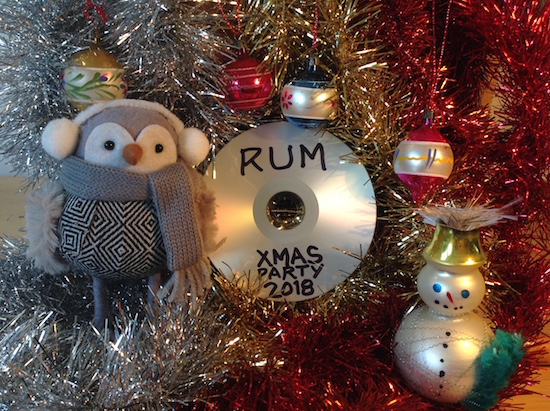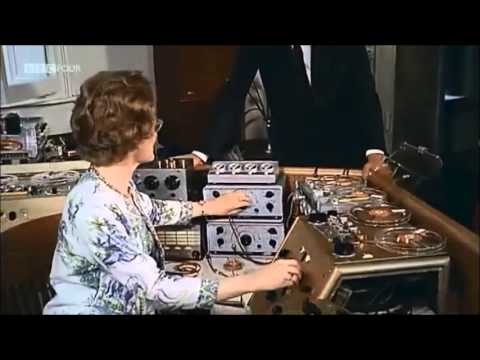WARNING: date_mismatch… temporal_activity_breach 720527…
RECEIVING: ICP_Memo_Rum_Music_0.1…
AUTHOR: Internet Conservation Project
DEPT.: culturology/musicology
DATE: 18 December 2318
There are all sorts of disagreements about how it happened, but when historians talk about ‘the end of music’ they tend to agree that its entropic demise gained critical mass back in the 21st-century. For many this period is recognised as fractious and volatile, with its technological accelerations, atavistic politics and societies riven by inequality – a precarious combination that experts say underpinned the erosion of what was known as ‘culture’ throughout western societies.
Ironically, by 2018 there was more music being made than ever before thanks to the cheap global distribution enabled by the internet, before those much-celebrated solar flares destroyed it. Some argue that it was this saturation that eventually fragmented audiences into groups so small that rarely anyone outside of a composer’s inner circle of close friends and family was listening in. There are other theories – perhaps social tribes collapsed when young people stopped taking drugs and listening, because they preferred to watch videos of strangers playing computer games online.
But it wasn’t all the internet’s fault. There is evidence that television and radio’s definition of music by 2018 had devolved into a crowd-pleasing popularity contest that just kept using the same instruments to play the same songs.
Here at the Internet Conservation Project, as we carefully dig through backup drives for salvageable content, we have tasked ourselves with finding and sharing examples of the 21st century’s most innovative music in the hope this may reboot our culture-starved society. One such source is in the form of reports by an organisation known as the Rum Music Library. Its remit was to acquire recordings that promoted unusual textures, rather than the melodies and regular rhythms that defined music for many.
Archaeologists from the Internet Conservation Project are keen to highlight that the roots of rum music stretch back into the early 20th century. Luigi Russolo of the Italian futurist movement described the traditional concert hall as “a hospital for anaemic ideas” and sought to celebrate the sounds “of crowds, of great industrial complexes, of trains, of ocean liners, of battle effects, of automobiles and airplanes”. So in the 1910s and 1920s he built a range of acoustic instruments known as ‘Intonarumori’ that whistled, gurgled, howled and croaked.
Then, by the middle of the 20th century, academia and other publicly funded institutions were the first to use tape, electronics and computer technologies to give birth to wilfully strange and challenging electroacoustic music. Pierre Schaeffer established the GRM (Groupe de Recherche Musicales) at French public broadcasting organisation RTF, having invented musique concrète involving the formation of new ‘sound objects’ from manipulated recordings. (It is worth noting, though, that in <a href=” http://timhodgkinson.co.uk/schaeffer.pdf “ target=”out”>an interview from 1986, Schaeffer reflected on his experiments to go beyond the ‘DoRéMi’ of traditional music, saying: “Unfortunately it took me 40 years to conclude that nothing is possible outside DoRéMi… In other words, I wasted my life.“)
Shortly after GRM’s arrival, the northwest German equivalent to RTF built a Studio für elektronische musik to conceive of compositions made purely of electronic signals, while a Computer Music Centre with a similar remit was set-up at Columbia University. And, perhaps most significantly, the Radiophonic Workshop, co-founded at the BBC by composer and musician Daphne Oram in 1958, created electroacoustic soundtracks for popular television programmes including, crucially, many children’s shows.
It is thought that the widespread distribution of the Workshop’s ‘alien’ sounds over four decades of TV primed the minds of future composers. By the end of the century, enjoying the availability of cheaper soundware, they would forge the forward-thinking genres known as ambient, dub, industrial, electro, noise and drone.
But the Rum Music Library seemed to consistently distance itself from genre. Like Russolo a hundred years before, it too tended to find anaemic any music determined by the parameters of an established scene. Instead, it kept an eye on the far edges of such movements, to spot those releases that dared to cross the border into hitherto unexplored regions of the continuum of sound.
This led to many internal arguments over its acquisition policies, and even caused the Library to temporarily close its doors in May 2017. The trouble was there was little consensus between staff: some maintained improvisation and chance elements were the only way to arrive at new modes, others stubbornly insisted that new sounds needed careful sculpting in a studio, while another faction maintained that field recording was the only domain where sounds were free to be themselves. The key to solving such arguments was the Library’s necessarily ever-shifting focus: as if hedging its bets, the Rum Music Library re-opened its doors in early 2019 with a loose remit of acquiring releases “that possessed an unusually profound attention to the qualities of sound”. While it was agreed these releases need not exclude melodies and rhythms, the rum nature of the sounds, be it their context, frequencies, timbre, dynamics or form, would be paramount.
Over the coming months, as the historians and researchers at the Internet Conservation Project uncover further documents from the Rum Music Library, we will present a selection here as a small sample of works from music’s ‘event horizon’, where conventions got swallowed up by the sheer vastness of the expanding universe of sound being presented, like a black hole in the mind of the listener.
For this introductory instalment we offer an audio file from December 2018 curiously titled ‘Xmas Party Mix’ that appears to round up some of what the Library considered to be the best examples of Rum Music of that year.
The Rum Music Library Xmas Party Mix 2018 tracklist:
00:00-00:20 Intro (includes an excerpt from ‘Music of the Spheres’ – Johanna Beyer / 1938)
00:15-05:24 Jana Winderen – ‘Spring Bloom in the Marginal Ice Zone (Speakers Mix)’ (excerpt)
from Spring Bloom in the Marginal Ice Zone / Touch 2018
“…this recording highlights the abundance of life under the waters of the marginal ice zone near the North Pole… its zest and vivacity prove almost harmonious at times, yet warn of what could be lost through climate change…”
05:08-10:12 Coppice – ‘Country Road’
from Green Flame / caduc. 2018
“…using a process called “physical modelling and modular synthesis” Noé Cuéllar and Joseph Kramer plough a personal path of sensitive, stripped back sound designs from brass and aluminium tubes, Fender Rhodes piano, no output oscillators, walkie-talkies and a copper plate processor…sometimes song-like, other times silent, but always studious…”
10:02-14:38 Common Objects – ‘Skullmarks’ (excerpt)
from Skullmarks / Meenna 2018
“…Skullmarks is one of six pieces performed by Common Objects that use museum pieces as scores. Here, a shaman’s raven mask from the 17th Century, a Tsimshian painted bear mask and a Native American bird-shaped vase from the 19th century are joined by a painted bear skull found in Nepal in 1936… Channelled through saxophone, two violins, electric harp, electronics and amplified devices the elemental, spiritual and ritual qualities of the objects are transposed into wild ‘though alluring textures…”
14:17-19:20 Daniel Menche – ‘Soundtrack for the book “D’Entre les morts”’ (excerpt)
from Soundtrack for the book “D’Entre les morts” / Lenka lente 2017; reissued 2018
“…thick, blackened layers of sonorous matter toll from the speakers to turn any listening environment into a dark coven. Despite its morbid connotations the sound quality of this twenty-minute piece is vividly bright and rich in detail…”
19:20-22:24 Mika Vainio – ‘Lydspor One’ (excerpt)
from Lydspor One & Two / Moog Recordings Library 2018
“…Lydspor’s two pieces bear all the weight that has become associated with Vainio’s work: they are filled with lo-end electrical energy that throbs and flows forming thick, blackened, snake-like currents… while engines turn pugilistically, adding a rhythmic dimension to complete the scene of circuitry driven to its extremes.”
22:18-25:38 Sarah Davachi – ‘Mordents’ (excerpt)
from Let Night Come on Bells End the Day / Recital 2018
“…another shining example of Davachi’s devotion to vintage keyboards that yields unique phenomena from rare frequencies…with ghosts of early music and prog…”
25:37-28:44 NYZ – ‘CSR34t kzM ENRONMI’ (excerpt)
from CSR Shaperz / Ge-stell 2018
“…custom building systems with generative algorithms that embrace chaos… [to] demonstrate unique electronic timbres in uneven and often frenetic sprays. Their fidgety and discombobulating baptism primes the brain for the lengthy, focussed pieces…”
28:38-33:18 YoshimiO, Susie Ibarra, Robert Aiki Aubrey Lowe – ‘Ccc’ (excerpt)
from Flowers of Sulphur / Thrill Jockey 2018
“…an improv supergroup consisting of Boredom’s drummer YoshimiO, percussionist Susie Ibarra and the voice plus modular synth of Robert Aiki Aubrey Lowe… together the trio energetically perform a soulful celebration of freedom…”
33:08-36:28 Klara Lewis and Simon Fisher Turner – ‘Drone’
from Care / Editions Mego 2018
“…less a celebration of noise and more an invocation for peace… a modern, cinematic symphony whose artful openness to all sound gives this duo as great a command as any orchestra.”
36:18-39:44 Organum – Untitled
from Raven / Siren Records 2018
“Raven is the first new recording from the oblique David Jackman in over eight years. Joined by Daisuke Suzuki and Alan Jones, they create a puzzling and daunting series of sonic anagrams from a raven’s caw, tolling bells and a grandiose piano…”
39:24-39:44 Outro (includes an excerpt from ‘Music of the Spheres’ – Johanna Beyer / 1938)



